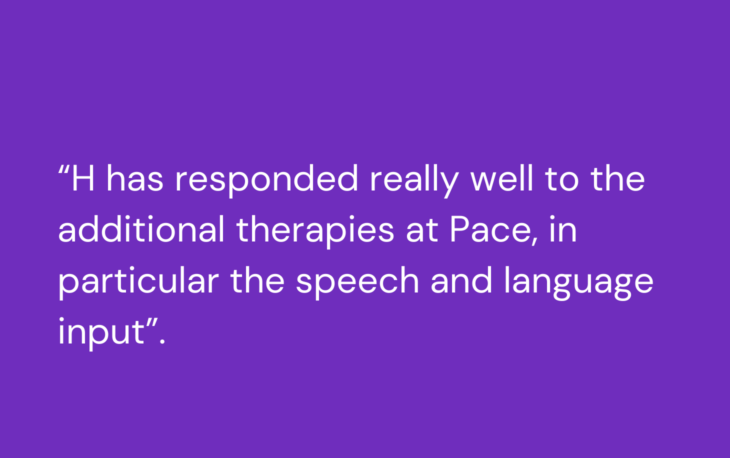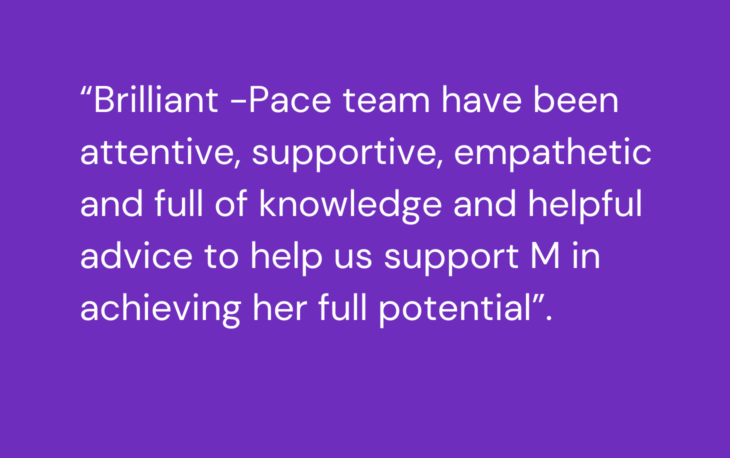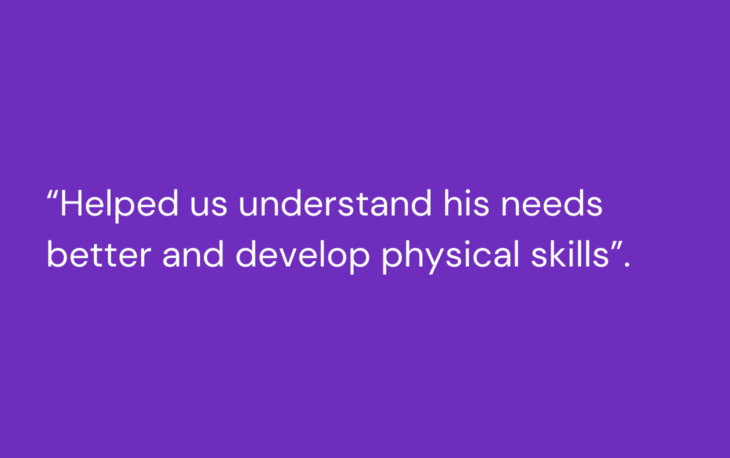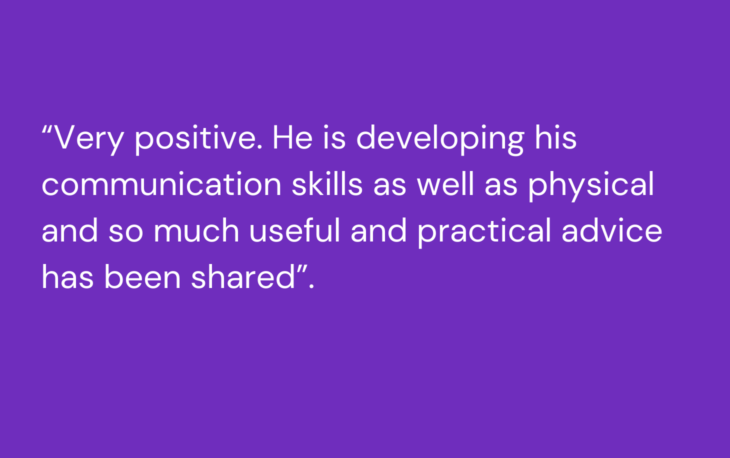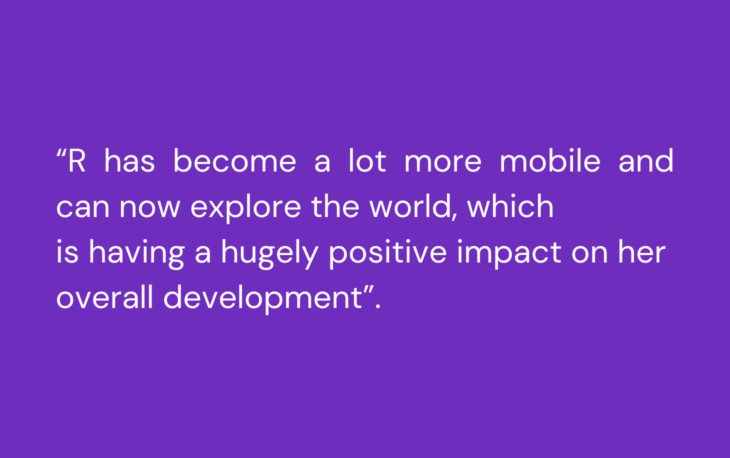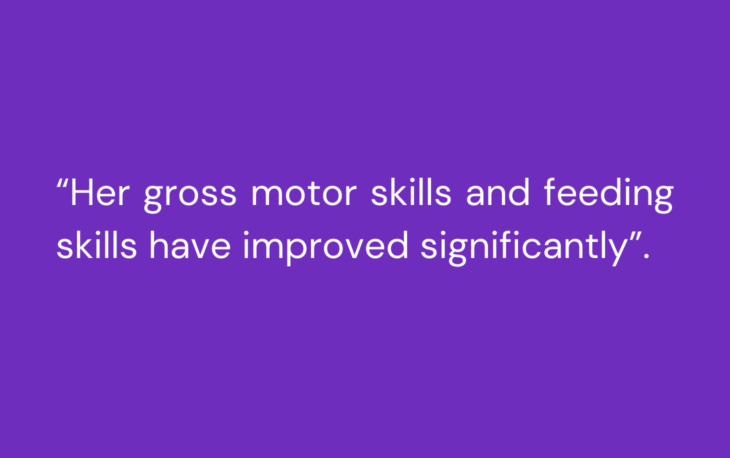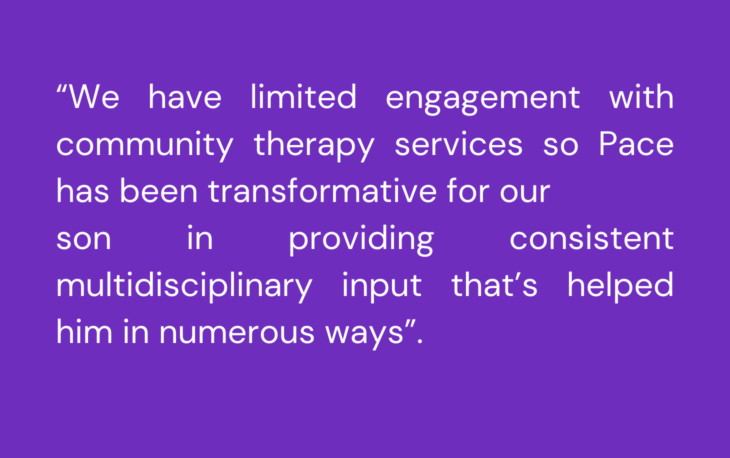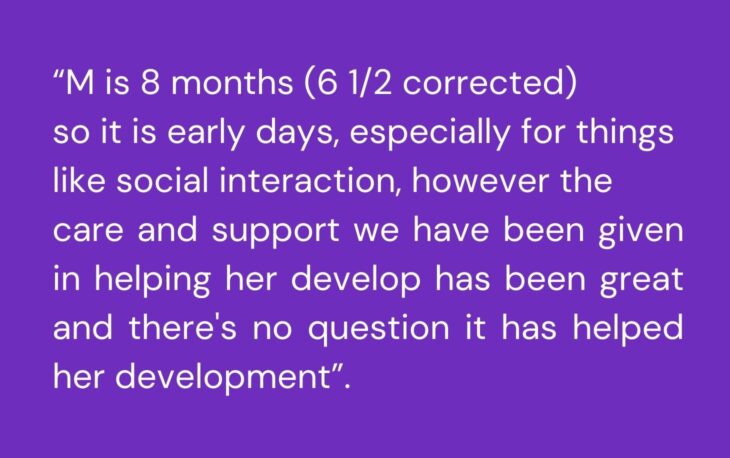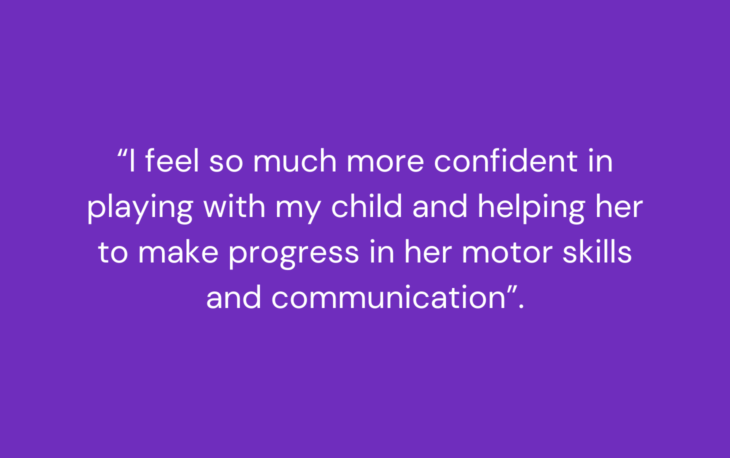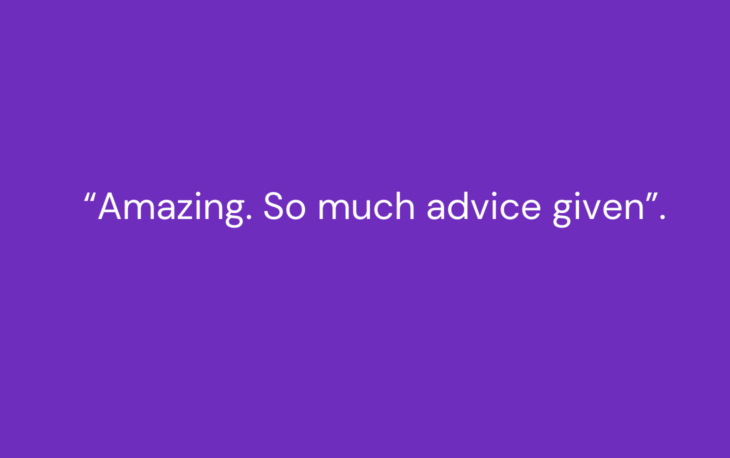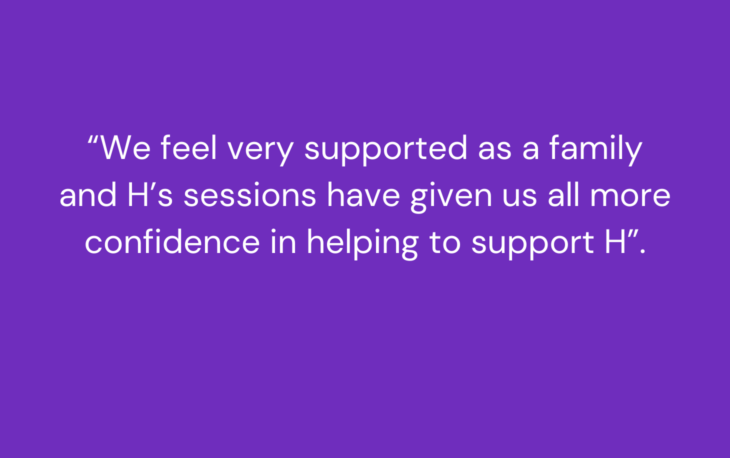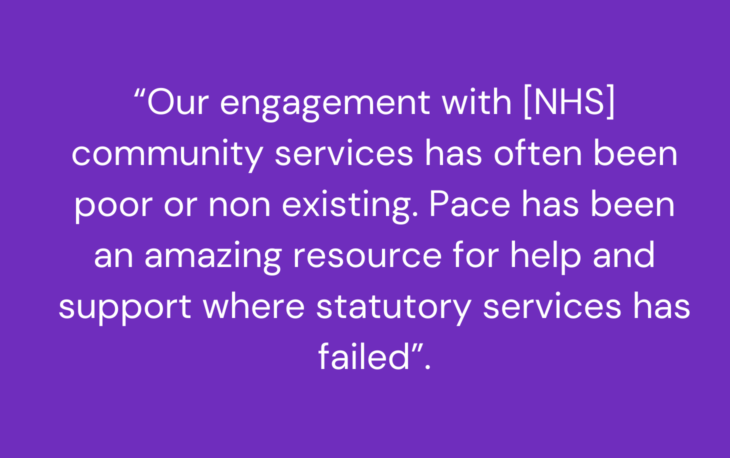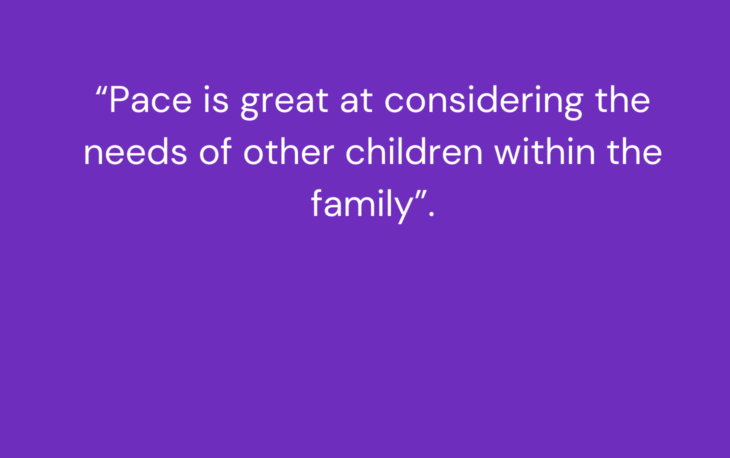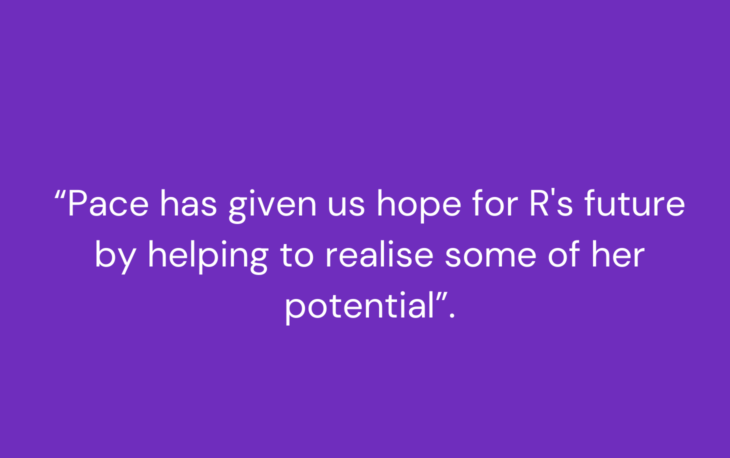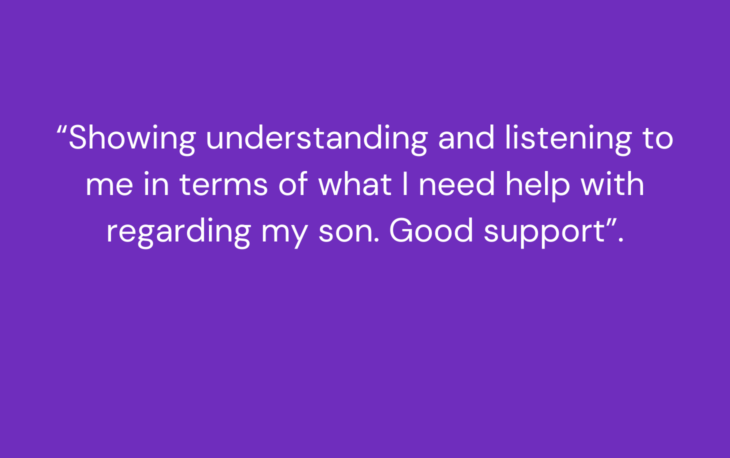Early Impact

Tracking specific goals
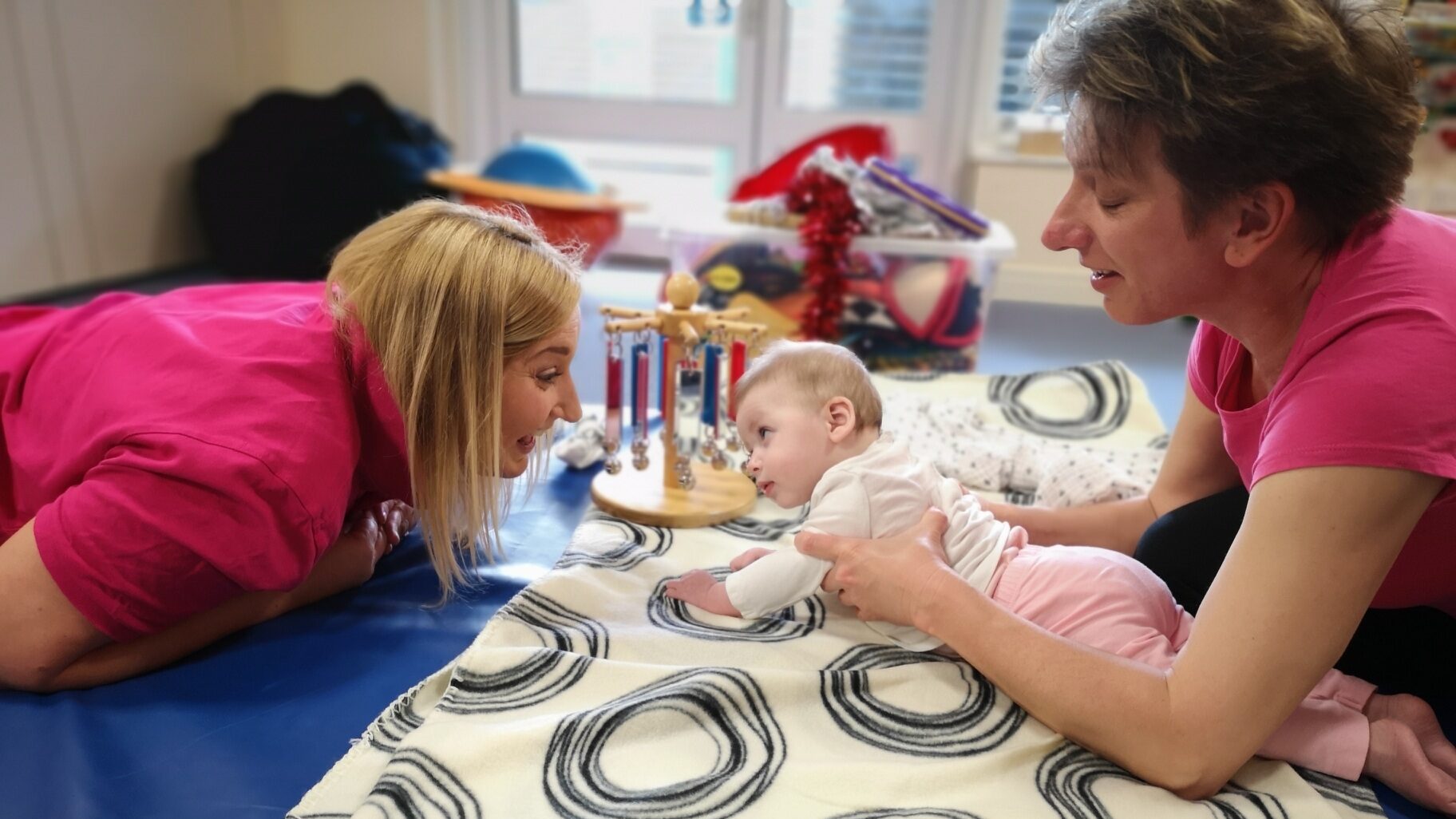
Tracking specific goals
For babies and toddlers, we typically measure progress towards goals using the Canadian Occupational Performance Measure (COPM). It covers all areas of life and is highly personalised to each child.
For school-age children, we typically measure progress using Goal Attainment Scaling (GAS). We use this in Pace School too. It’s a method of assessing each child as an individual, as they progress towards their own personal learning goals.
Both systems mean we not only track each child’s progress, we can also monitor the impact of Pace services in helping children meet their goals.
Families’ experiences
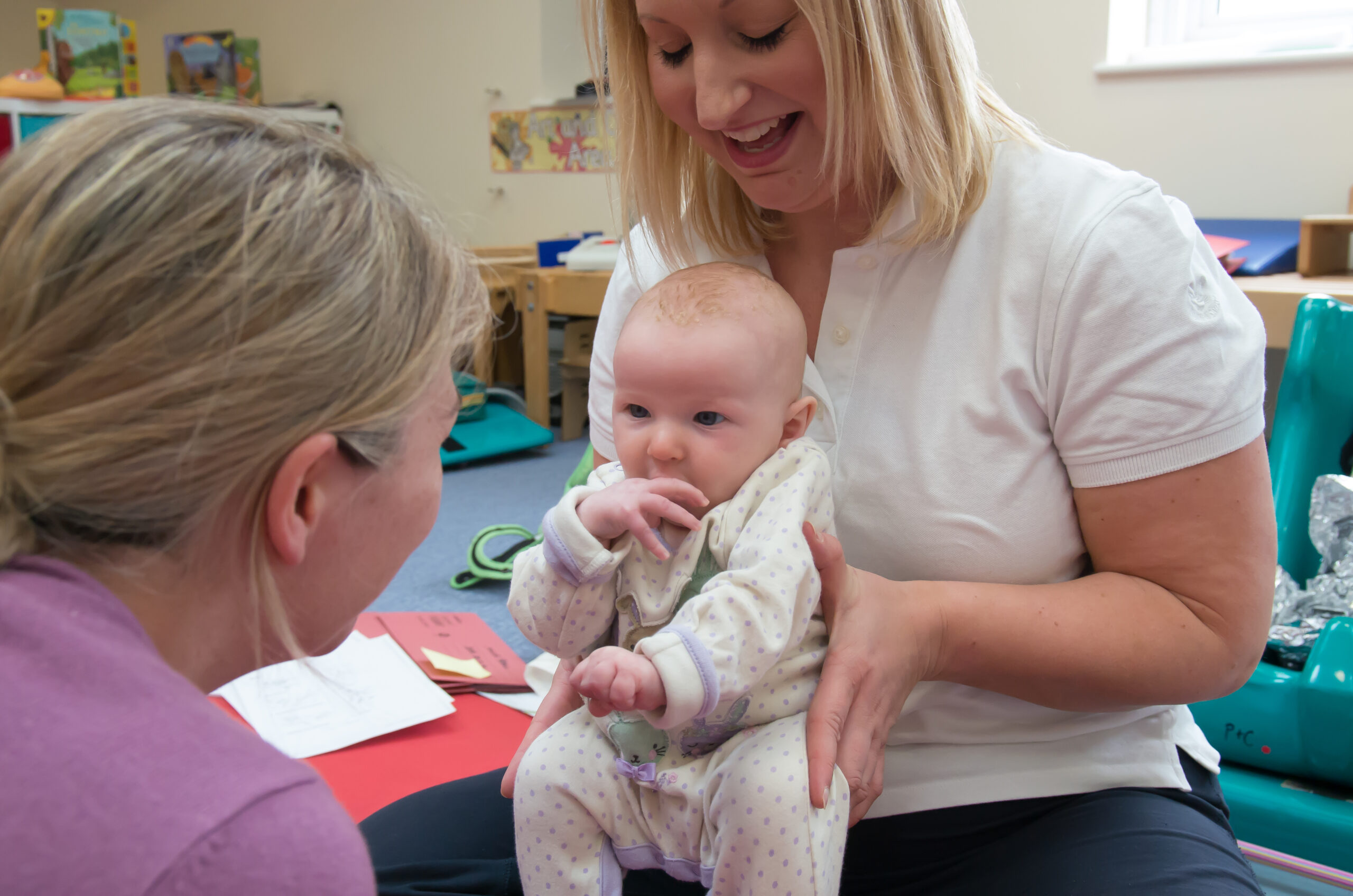
Families’ experiences
Measuring the impact our early intervention programme is typically harder than within Pace School, given the wider range of conditions we work with and the disparity of needs. A baby who has been red-flagged for potential developmental issues will have very different needs, and a very different Pace intervention, compared to a 4-year-old who has a confirmed diagnosis of cerebral palsy and complex developmental challenges.
“Parents continue to rate our early intervention service highly, with 82% rating it as “excellent” and 18% as “good”
We asked:
Overall how would you rate Pace Early Intervention on the following scale?
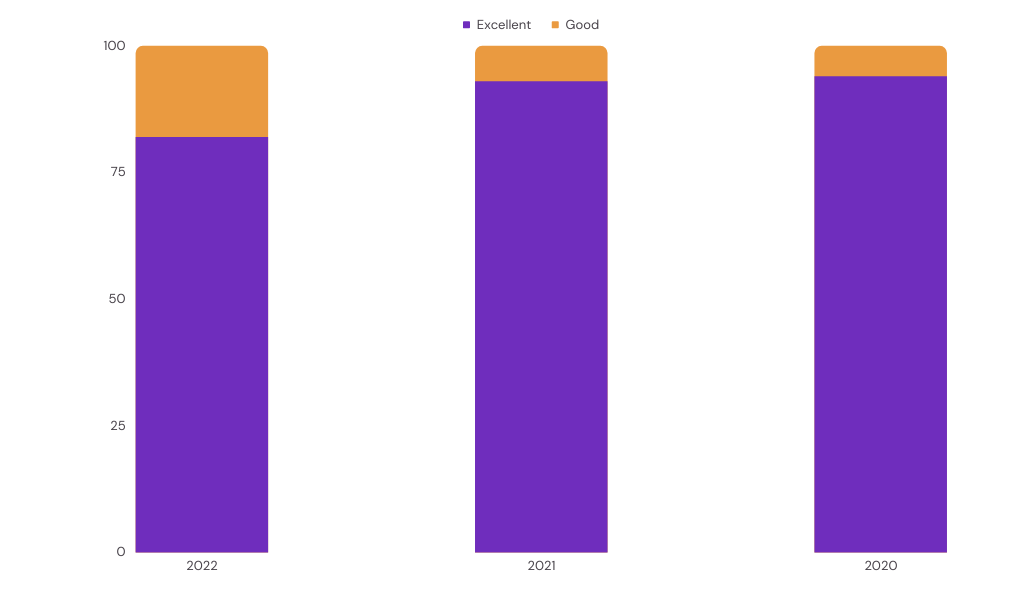
The 2022 rating is a little lower than in 2020 and 2021, which we ascribe to two main factors:
- Staffing and communication: In 2022 we had a number of staffing changes, both in our therapy team and our administration function. We recognise that the quality and proactivity of our communication with families slipped during this period, which we are working hard to improve.
- COVID: In 2020 and 2021, the COVID pandemic meant that for long periods, Pace was effectively the only available provision and that we were literally a lifeline for those families. We believe that parental perceptions of Pace in those years were positively skewed as a result
Impact on Our Children
“The service continues to score highly across the key outcomes that it targets, with some variability driven by the variety of underlying conditions and needs of the children and families responding to the survey.”
We asked:
To what extent do you agree or disagree with the following statements about Pace’s impact on your child?
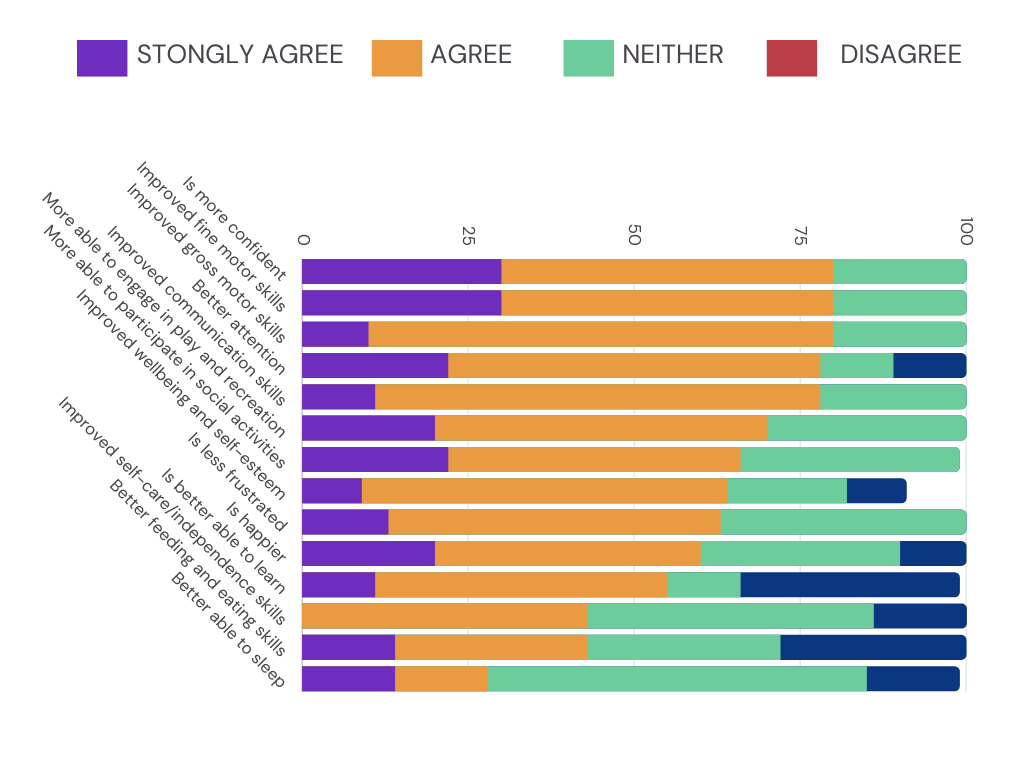
Where a particular outcome is not specific to a child (e.g. “Has improved self-care/independence skills” for a 2-month-old baby), it seems that parents sometimes respond “Neither Agree nor Disagree” rather than “Not Applicable”, skewing the results for that outcome as a whole. For example, lower ratings for self-care/independence, feeding & eating, and sleep are driven to a significant extent by the reality that these outcome areas are irrelevant to a meaningful number of children in the survey. We plan to address this measurement challenge in further iterations of this survey, particularly by using interviews rather than questionnaires to ensure that responses are accurately recorded. We also intend to measure more frequently, so that we can capture feedback soon after a block of intervention.
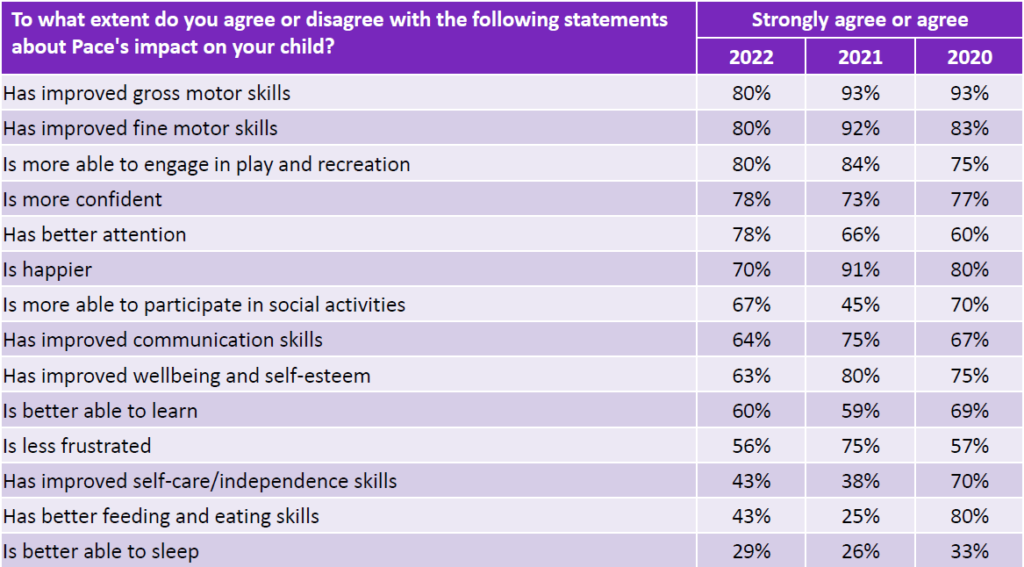
What parents say
Impact on our families
The outcomes reported for families are more clear-cut than those for children. We continue to score very highly in the areas under which we have most control (i.e. our listening and support, the quality of our advice and the upskilling of our parents). However, we recognise that families are struggling more in areas where we have less direct control (i.e. more generalised well-being, stress and strength of the family unit). This may represent a generalised worsening in mental health and wellbeing across the wider population, but it does demonstrate the need for us to keep working to support these critically important areas of family wellbeing.
We asked:
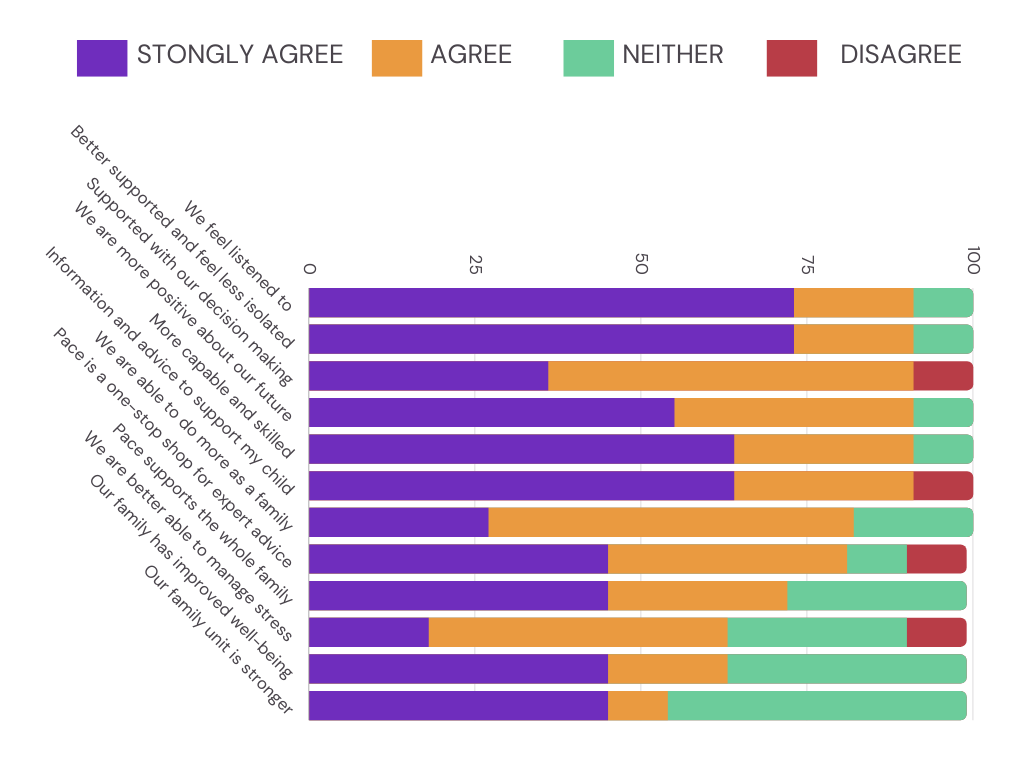
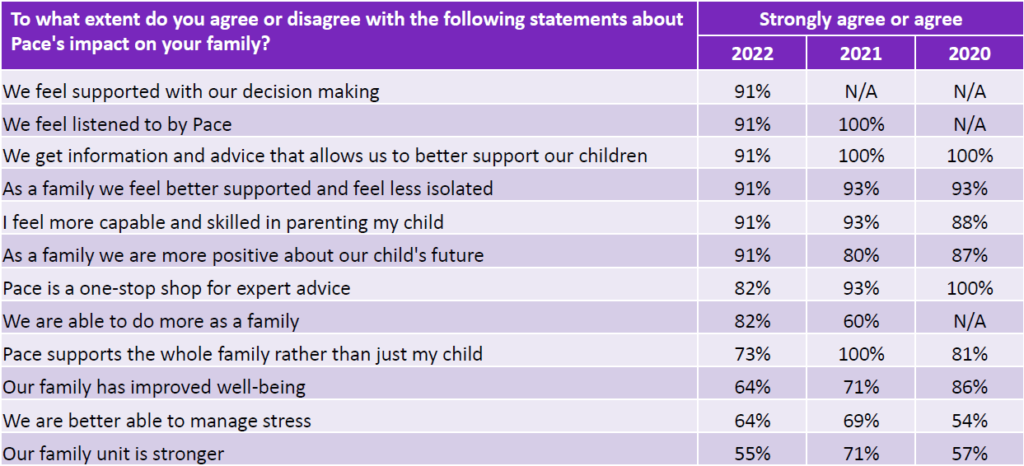
What our families say
Further impact
Keep up to date with Pace news, appeals and fundraising
By submitting your details, you are consenting to our privacy policy

